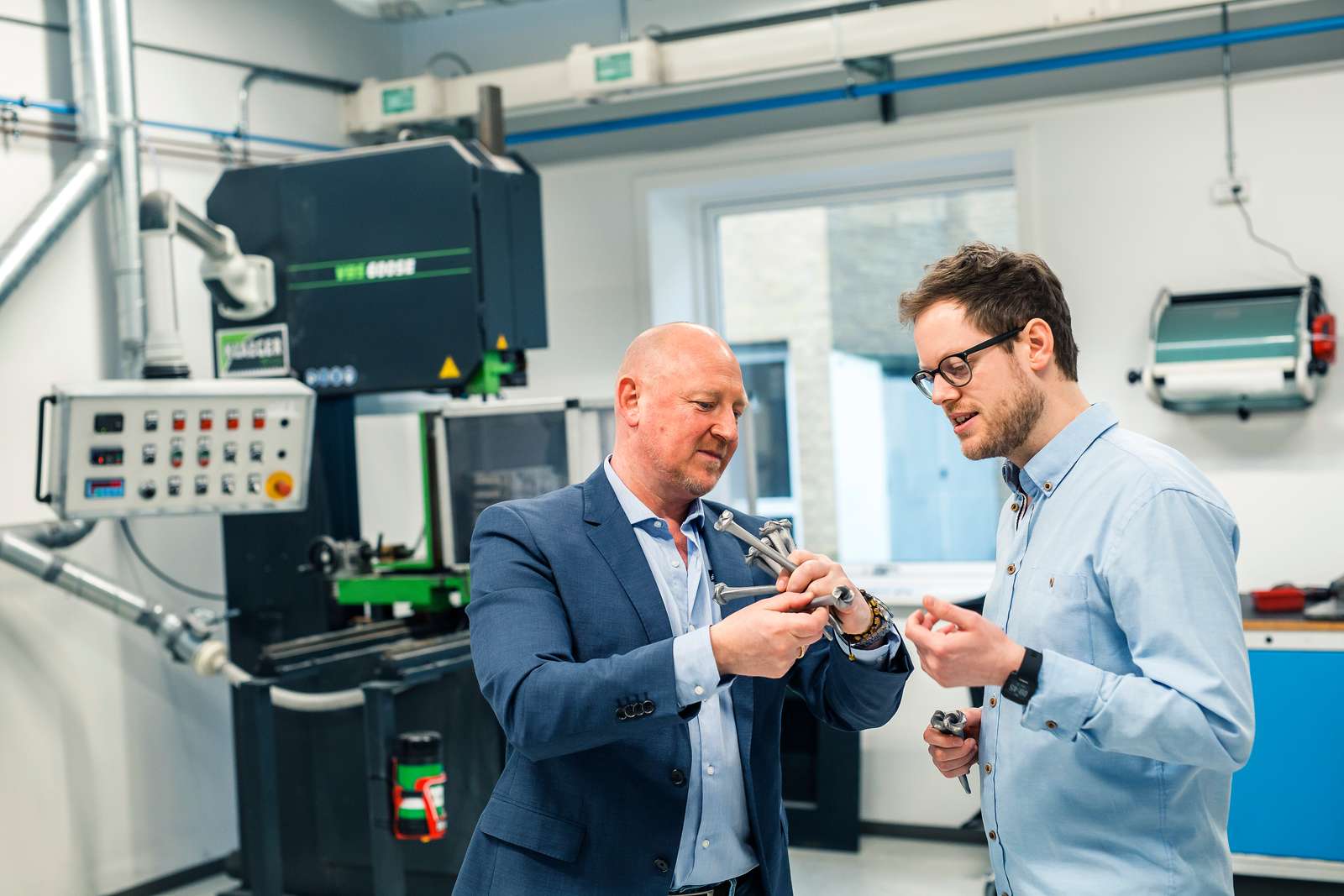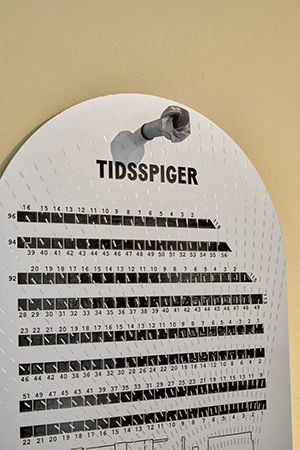
Metal 3D printing creates artwork for Nyboder Campus
“Tidsspiger” (Time Spikes) is an artwork by the artist Eau Pernice. The piece, 3D-printed in aluminum at the Danish Technological Institute, explores themes such as the passage of time, the preservation of history, and the strengthening of community.
The collaboration on 3D printing began when the artist, Eau Pernice, contacted the Danish Technological Institute after learning that metal 3D printing was possible there. This aligned with her art project, which featured very complex geometry, leading her to consider whether the artwork could be 3D-printed.
The piece consists of 400 so-called "spikes" (“spiger” is an old Danish word for nails). Each spike resembles a nail-like structure with a rosebud-like shape at the head.
After an initial dialogue and meeting where Eau Pernice presented her art project and designs, it was determined that the spikes could indeed be 3D-printed.
Watch a video of the production process - the case continues below the video
Focus on climate considerations
In addition to the complexity of the spikes' geometry, Eau Pernice also emphasized the climate and environmental aspects of production.
For instance, it was important that the production was local—meaning the components were produced in Denmark—and that the process used no more material than necessary.
- Speed was also a factor, as production needed to be relatively quick. Since only 400 units were required, there was no interest in exploring other manufacturing methods that would require setting up for mass production, Brian Lykke Christensen, business manager at the Danish Technological Institute, explains.

Different prototypes led to aluminum
Initially, the Danish Technological Institute 3D-printed a spike in plastic to provide an affordable prototype for Eau Pernice to physically assess.
Subsequently, samples were printed in both titanium and aluminum to determine the most suitable material. Once aluminum was chosen, a few pieces were printed to achieve the desired surface finish, which was intended to look unique. During this process, Eau Pernice visited the Danish Technological Institute to observe the production process and evaluate the components.
It was decided that the printed spikes would receive light sanding and classic deburring to ensure they retained a slightly rough surface texture.
For us, this has been a very exciting collaboration. We’re used to talking to engineers and working toward industrial applications, so understanding an artist’s desired expression was fun and insightful. And we’ve successfully completed the project, which is very satisfying
- Brian Lykke Christensen, Danish Technological Institute
Once all 400 spikes were printed, Brian Lykke Christensen personally delivered them to Eau Pernice at Nyboder Campus, along with instructions for maintenance and cleaning.
 - This is a piece that is, in principle, meant to last forever, so it’s important that it’s mounted and maintained properly, Brian Lykke Christensen concludes.
- This is a piece that is, in principle, meant to last forever, so it’s important that it’s mounted and maintained properly, Brian Lykke Christensen concludes.
About the Artwork “Tidsspiger”
Nyboder is a protected historic area that has served as housing for the Navy's personnel and later the entire Defense personnel for nearly 400 years. The Danish Ministry of Defence's Estate Agency is currently restoring and modernizing the yellow row houses in multiple phases. The central part of the neighborhood will be dedicated to an urban campus for the students of the Royal Danish Defence College in Copenhagen.
Visual artist Eau Pernice was selected in 2021 through a pitching competition to develop a satellite artwork intended as a kind of housewarming gift for each residence in the campus. The artwork consists of 400 nails, serving as a representation of time, tradition, and cohesion in Nyboder. The artwork symbolizes the resident's own place and connection to the community through tradition and a shared narrative.
Each of the nails, known as "Tidsspigere" (or time spikes) are nail-like installations placed in every home. Beyond their sculptural aesthetic, the nails also serve a practical purpose, as residents can use them to hang objects. They also carry symbolic significance: all time spikes are mounted at angles pointing toward Nyboder's Memorial Rooms—a museum located in the oldest of Nyboder's buildings, constructed in the 1630s, showcasing Nyboder's long history. At the Memorial Rooms, one can find the "Motherwork," a plaque that explains the art project and connects the entire artwork.
Since the artwork is being installed gradually as part of the restoration and modernization of Nyboder’s housing, the final timeline for when the remaining time spikes will be mounted is not yet known. Currently, they are stored in a transparent "future suitcase" at Kastellet, serving as a reminder of what is still to come.